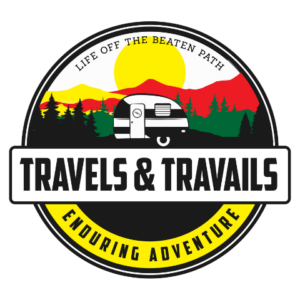Is there anything more frustrating than planning your RV itinerary around visiting a national park only to discover your vehicle is too large? I can hardly think of anything! It helps to have this information before you go, so what is the largest RV you can take in a national park?
The largest RV allowable in state parks is 100 feet long. However, that doesn’t mean every national park will permit such sizable RVs. Others restrict you to 45 or even 35 feet, so you must know the park’s policy before visiting.
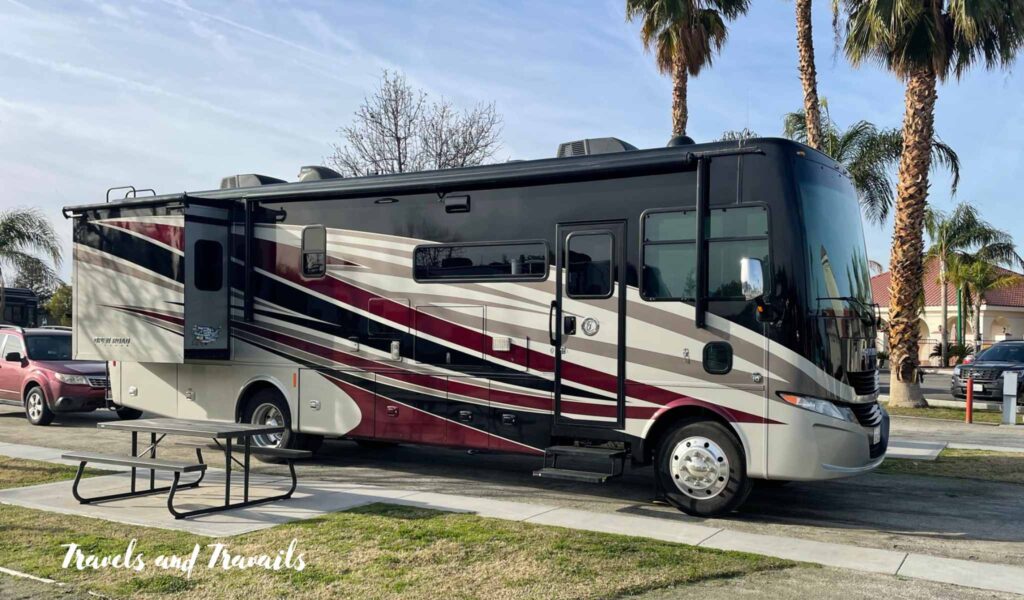
This guide will explore national parks and their rules about permissible RV sizes, so make sure you don’t miss it!
How Big of an RV Is Allowed? The Appropriate Motorhome Sizes by United States National Park
The US has 63 national parks. This guide will go into detail on the allowable motorhome size for as many parks as we could find the information for.
Acadia National Park
Before planning that trip to Maine to see Acadia, make sure your motorhome measures 35 feet or under, as no larger vehicles are allowed in the park.
Arches National Park
Utah’s Arches National Park is named after its mountainous arches made of sandstone. To see the Double Arch, Landscape Arch, or Delicate Arch, your RV must be no larger than 30 feet.
Badlands National Park
In much of South Dakota’s Badlands National Park, an RV that’s 40 feet long is allowed. However, if you’re camping out at the Sage Creek Campground, your vehicle can’t measure more than 18 feet. That’s quite restrictive, so plan accordingly.
Big Bend National Park
The Texas park Big Bend and its views of the Rio Grande are only accessible to motorhomes measuring less than 24 feet. The park has a slew of RV back-in camping sites with sewer, water, and electrical connections.
Black Canyon of the Gunnison National Park
The Colorado national park named for its famous views of the Gunnison River permits RVs at varying lengths depending on where in the park you visit.
If you’re in the Loop B part of Black Canyon of the Gunnison National Park, the standard allowable RV length is 30 feet, but some sites allow for motorhomes or travel trailers + towing vehicles with lengths up to 55 feet.
Canyonlands National Park
Utah’s Canyonlands National Park includes mesas, buttes, and canyons as far as the eye can see. To explore the close quarters, your RV must measure no more than 28 feet.
Capitol Reef National Park
Another great national park in Utah to go exploring is Capitol Reef. Here, bigger motorhomes abound, especially in the A Loop and B Loop, where RVs measuring up to 40 feet can fit.
Loop C has room for motorhomes 40 to 52 feet long.
Crater Lake National Park
Witness the beauty of Oregon at Crater Lake National Park, which permits motorhomes up to 50 feet long. You’ll camp along an old volcano known as Mount Mazama and experience the bluest waters you might have ever seen.
Cuyahoga Lake National Park
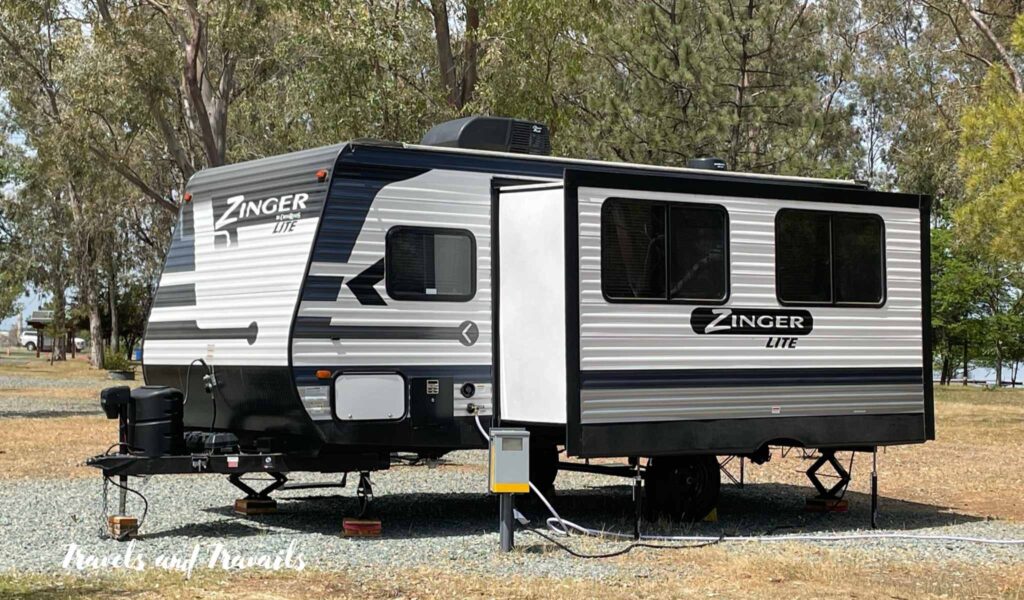
Offering nearly 100 RV sites, there’s plenty of room for you at Cuyahoga Lake National Park in Ohio. Your RV mustn’t be longer than 40 feet to experience the range of amenities at this beautiful park.
Death Valley National Park
Everything is bigger in Texas, as Death Valley National Park proves. On the Mesquite Springs Campground and the Texas Springs Campground, RVs up to 35 feet long can fit.
If you’re staying at the Furnace Creek Campground, some sites can fit vehicles up to 100 feet!
Denali National Park
One of the best-known national parks in the country, Denali in Alaska permits motorhomes measuring 40 feet max. Once you’re there, don’t miss Wonder Lake or the majesty of the Alaska Range.
Everglades National Park
The biggest expanse of tropical wilderness in the country can only be found at Everglades National Park. If planning to stay at this Florida park for a night or several, ensure your RV measures no more than 45 feet.
Gateway Arch National Park
If you have a bigger RV or travel trailer setup, plan to find a place to camp at Gateway Arch National Park early. This Missouri park has room for motorhomes up to 90 feet long, but only as available!
Glacier National Park
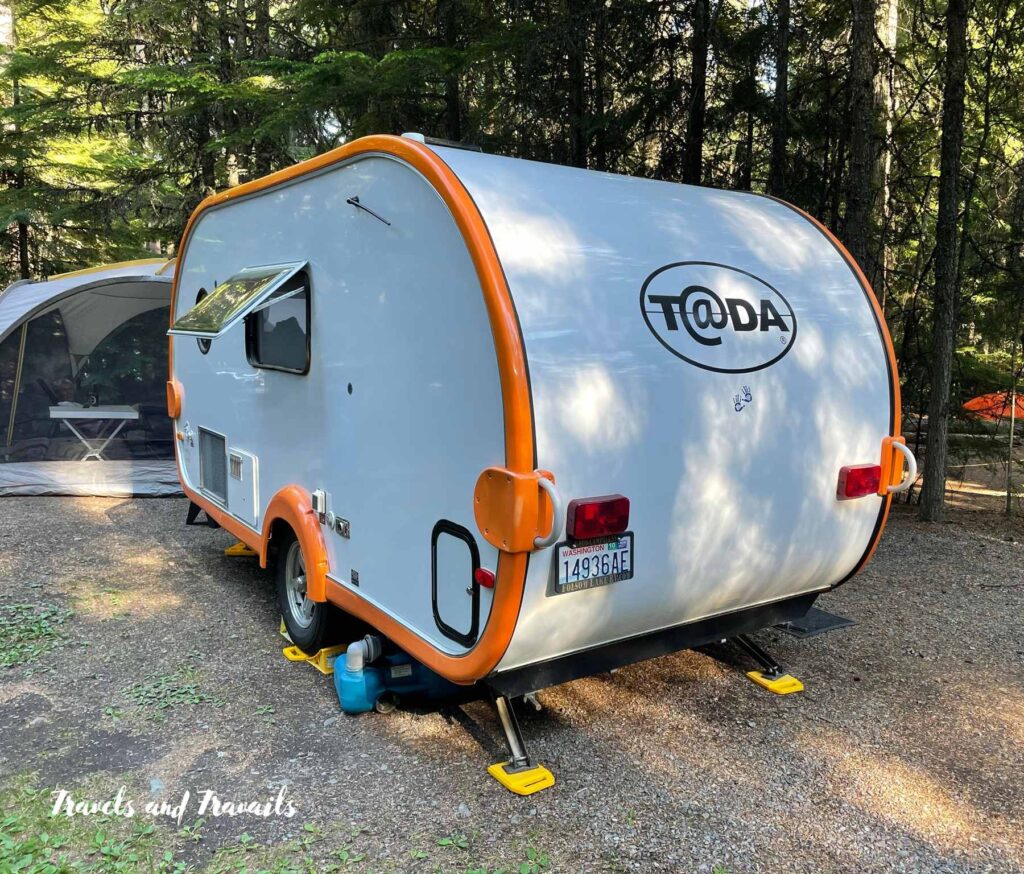
Montana’s Glacier National Park features nearly 30 glaciers, but they’re all receding quickly. To access Going-to-the-Sun-Road here, your RV must not measure more than 21 feet long, eight feet wide, and 10 feet tall.
Grand Canyon National Park
The RV length restriction to see the Grand Canyon is 30 feet at several campgrounds, although some have room for rigs up to 50 feet.
Grand Teton National Park
Wyoming’s Grand Teton National Park offers the tallest mountain views on this side of the Teton Range. Your RV must not measure more than 30 feet if you want to see Jackson Hole up close and personal.
Great Basin National Park
Great Basin National Park in Nevada houses bristlecone pines that date back more than 5,000 years. If you camp on the Upper Loop during your stay, your motorhome cannot measure more than 24 feet long.
Great Sand Dunes National Park
The dunes created within Colorado’s Great Sand Dunes National Park are as tall as 750 feet. When camping here in a motorhome, the sites cannot accommodate RVs larger than 25 feet. Book early to nab your spot.
Great Smoky Mountains National Park
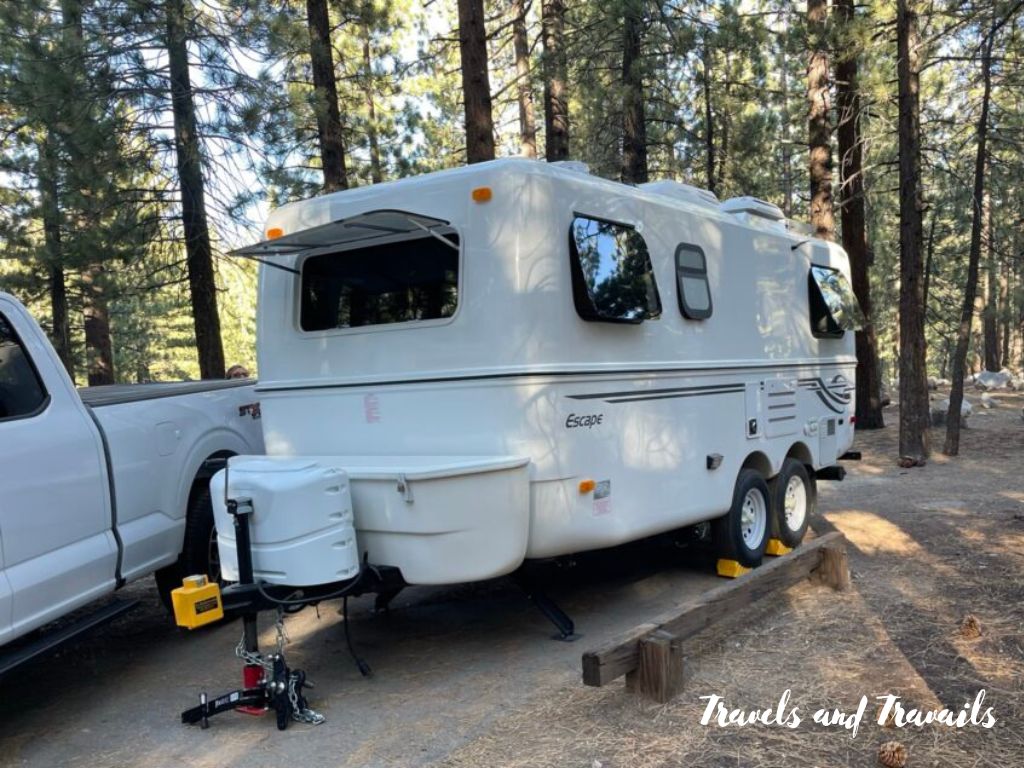
If you’re considering staying in the Great Smoky Mountains National Park, the allowable RV length varies by campsite. Abrams Creek only permits motorhomes up to 12 feet, Cosby Creek lets in motorhomes measuring 25 feet, and Deep Creek can accommodate RVs that are 26 feet.
Balsam Mountain has room for larger motorhomes up to 30 feet, while Cataloochee fits RVs of 31 feet. Elkmont has the space for trailers measuring 32 feet and RVs that are 35 feet.
Guadalupe Mountains National Park
Guadalupe Mountains National Park is another example of how everything is bigger in Texas. You can squeeze in a travel trailer or RV here that’s under 55 feet. Up to 13 campsites are available.
Hot Springs National Park
In Arkansas, Hot Springs National Park permits RVs up to 60 feet. You can see a lot of history at this park, especially at Bathhouse Row, with its architecture dating back to the 19th century.
Indiana Dunes National Park
With 140 campsites, Indiana Dunes National Park makes a fantastic spot to visit. Most campsites can accommodate RVs up to 55 feet, but others only have space for smaller vehicles. Otherwise, you’d have to stay in the overflow parking lot.
Joshua Tree National Park
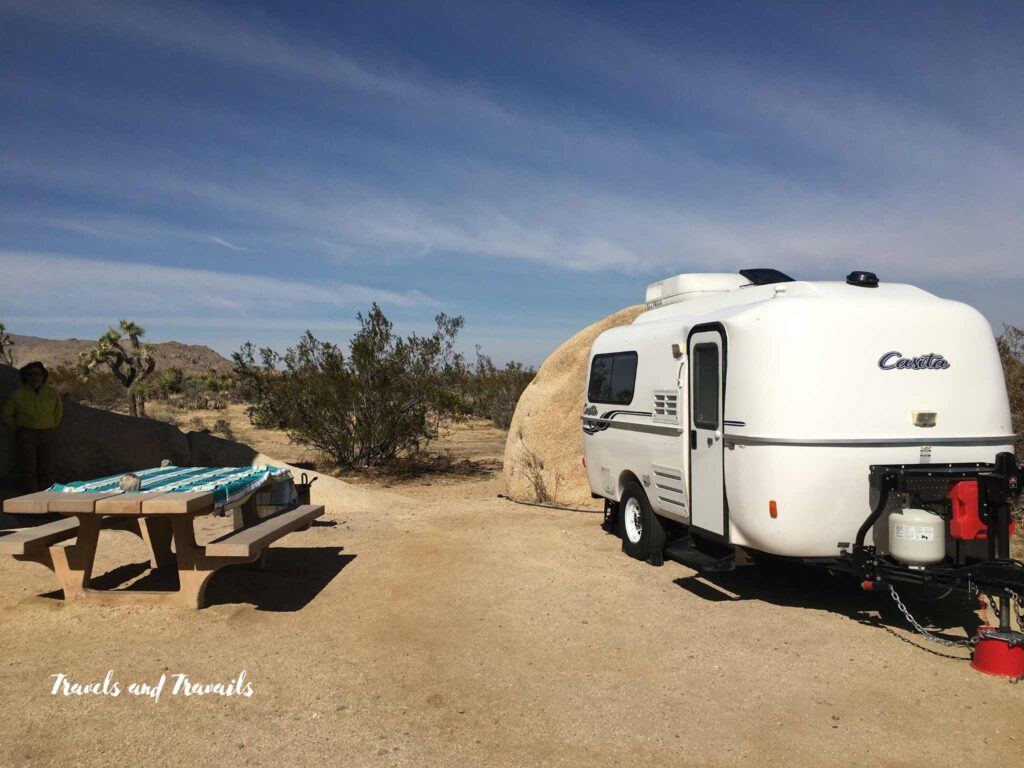
When camping at the famous Joshua Tree, choose Belle Campground if your motorhome measures 25 to 35 feet, as you’ll have room to park here. The Hidden Valley Campground and White Tank Campground only have room for 25-foot RVs max.
Kings Canyon National Park
Only plan to stay in California’s Kings Canyon if you own a smaller RV. The limit here is 22 feet, as that’s the max size of vehicles that can reasonably fit on the narrow roads of the park!
Kobuk Valley National Park
Kobuk Valley in Alaska features the Hunt River, Little Kobuk, and Great Kobuk sand dunes, but they’re only accessible if your motorhome is 40 feet or under. The dunes here are the largest in the Arctic, so they’re worth seeing!
Lassen Volcanic National Park
California’s Lassen Volcanic National Park has the biggest lava dome volcanoes on this entire planet. Across the park’s campsites, the max length is 40 feet long for trailers and 45 feet long for motorhomes.
Mammoth Cave National Park
Kentucky’s Mammoth Cave National Park and its 400+ miles of caves and passageways limit trailer and RV sizes on the grounds. Trailers can measure 26 feet long, and motorhomes 38 feet. Unless you opt for a VIP site, you won’t have any hookups. There are only two such sites at the park!
Mesa Verde National Park
A park with Ancestral Puebloan sites, Mesa Verde National Park also welcomes RVs. If your motorhome is up to 46 feet, make a beeline for the Morefield Campground. Book your reservation early, as lots of big RVs want to stay here, and spots go fast.
Mount Rainier National Park
The Washington national park Mount Rainier allows different-sized motorhomes by the campground.
At Ohanapecosh, trailers up to 27 feet and RVs up to 32 feet are allowed. If you stay at Cougar Rock, trailers must be 27 feet or less, and RVs 35 feet or less.
North Cascades National Park
Another great Washington national park to add to your travel itinerary is North Cascades and its glacial mountain peaks. Your RV must not exceed 25 feet in length if you hope to camp out and stay for a while.
Olympic National Park
Olympic National Park–yet a third national park in Washington–also requires motorhomes to be on the smaller side when visiting the Quinault and Hoh Rainforests and the Olympic Mountains. Your motorhome cannot exceed 21 feet.
Pinnacles National Park
California’s Pinnacles National Park features gold and black monoliths throughout. You can enjoy these sights for yourself if your motorhome measures at least 30 feet, but no longer. You can opt for non-electric or electric sites during your stay.
Redwood National Park
Named after the coastal redwoods here that rise up into the sky as far as the eye can see, California’s Redwood National Park doesn’t have the most room for motorhomes. Your RV must be 25 feet. If you drive a trailer, that can’t exceed 21 feet.
Even then, not every campground has the space to accommodate your vehicle, so book early!
Rocky Mountain National Park
The varied ecosystem at Rocky Mountain National Park includes alpine tundra, subalpine and montane forests, and well over 100 riparian lakes. Fortunately, the park has the space for both RVs and trailers measuring up to 40 feet long.
Sequoia National Park
If you’re planning a stay at Sequoia National Park, your motorhome cannot exceed 22 feet if you’re camping out between the Giant Forest Museum and Potwisha Campground.
If you stay between Potwisha Campground and the Foothills Visitor Center, the max motorhome length is 24 feet.
Voyageurs National Park
Minnesota’s Voyageurs National Park oversees four lakes across the border between the US and Canada. Ensure your motorhome measures no more than 40 feet long if you wish to camp here!
Yellowstone National Park
As one of the most popular national parks, of course, Yellowstone has restrictions on RV length.
Most campgrounds can fit motorhomes and trailers between 30 and 40 feet. If you’re on the Fishing Bridge, vehicles up to 95 feet can traverse.
Yosemite National Park
California’s majestic Yosemite is the home of Yosemite Valley, El Capitan, the Half Dome, and Yosemite Falls. Eight campsites have accommodations for trailers measuring 35 feet and RVs measuring 40 feet.
You’ll find two of those campsites in the North Pines and six of them in the Lower Pines. Be aware these sites only operate between spring and autumn.
Zion National Park
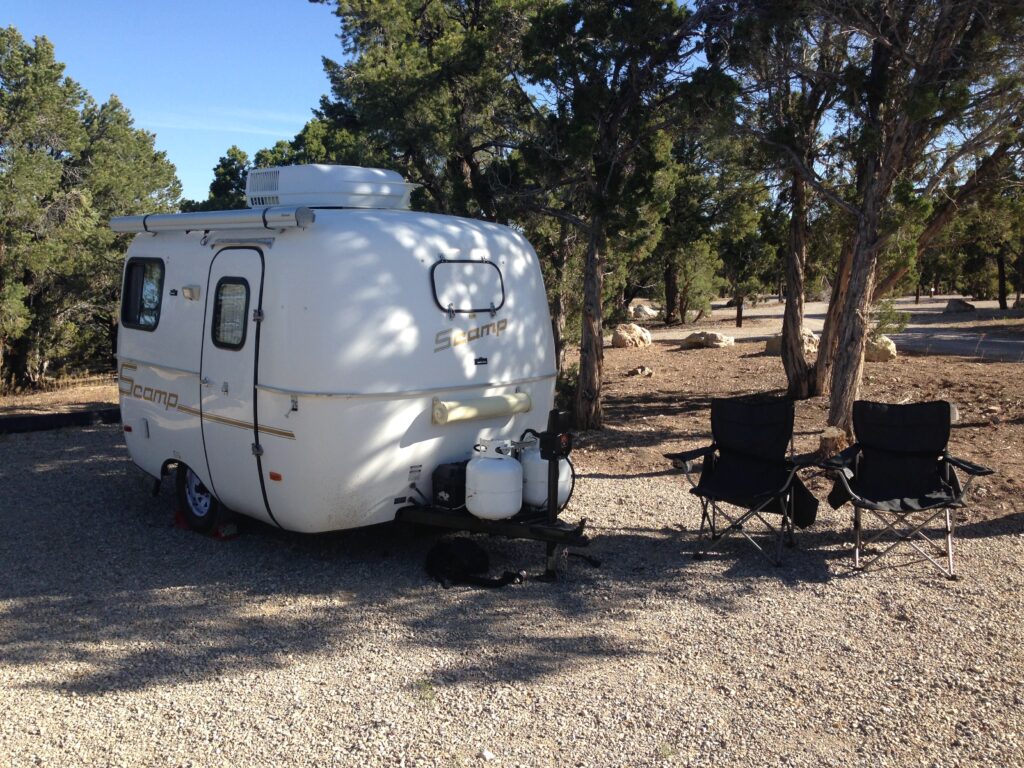
On the Colorado Plateau lies Zion National Park. An RV cannot exceed a width of seven feet, 10 inches or a height of 11 feet, four inches if you hope to get into the park. That includes mirrors.
Further, your motorhome cannot measure more than 40 feet long or 13 feet, one inch tall if you want to be granted access to the park!
If you’re interested in visiting the national parks, you might want a national parks pass. Find out if it’s a good idea for you.
Conclusion
The largest RV size allowable in national parks throughout the US varies. Some parks accommodate smaller motorhomes measuring 21 feet long while others have the space for average-sized Class A or Class C RVs at 41 feet, and more still can handle hulking behemoths up to 100 feet!
Keep this information in mind before you go camping. If you try to enter a national park in an RV that’s larger than allowed, you will be turned away!
